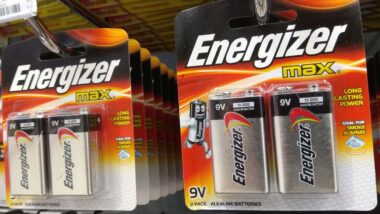Top Class Actions’s website and social media posts use affiliate links. If you make a purchase using such links, we may receive a commission, but it will not result in any additional charges to you. Please review our Affiliate Link Disclosure for more information.
Chronic lymphocytic leukemia is the most common type of leukemia found in adults and starts in the cells that develop into white blood cells in the bone marrow. The symptoms of chronic lymphocytic leukemia often build up very slowly, meaning a person may have the disease for years before they are diagnosed.
While the causes of this disease are unknown, certain people may be at a greater risk of developing the disease. For instance, those exposed to weedkillers for long periods of time may be at a greater risk of developing this and other kinds of cancer.
If you’ve developed leukemia or lymphoma after exposure to weedkiller, you may be eligible for compensation. Class action settlements regarding this issue could reach into the millions.
Chronic Lymphocytic Leukemia Definition
Leukemia is an umbrella term that applies to all cancers that originate in the blood-forming cells of the bone marrow, according to the American Cancer Society. There are other cancers that may affect the bone marrow, but only cancers that originate in the bone marrow should be classified as leukemia.
When one of the cells in the blood marrow becomes a leukemia cell, it begins to grow out of control, often dividing and making new cells faster than normal. As a result, leukemia cells build up in the marrow and leak into the bloodstream. The leak increases the number of white blood cells in the blood and allows leukemia to spread to other organs.
Leukemia may be categorized as myeloid or lymphocytic depending on the bone marrow cells in which it originates. Lymphocytic leukemia starts in cells that become lymphocytes and is also known as lymphoid or lymphoblastic leukemia. Lymphomas may also start in these cells, but leukemia and lymphomas differ. Leukemia is mainly located in the blood and marrow while lymphomas are generally located in the lymph nodes.
Chronic lymphocytic leukemia is leukemia that originates in the pre-lymphocyte cells of the bone marrow and develops slowly. These leukemia cells may appear normal, but they don’t fight infections as effectively as normal white blood cells. These cells build up and spill into the bloodstream, as well, but they may exist in the body for some time before causing problems relative to acute leukemia. However, chronic lymphocytic leukemia is also harder to treat than its acute counterpart.
What Are the Symptoms of Chronic Lymphocytic Leukemia?
The symptoms of chronic lymphocytic leukemia may be subtle. In fact, the Leukemia and Lymphoma Society (LLS) reports that many people diagnosed with this disease may experience no symptoms prior to their diagnosis. Usually, the condition is found during an annual physical or an unrelated medical exam and is determined based on abnormal blood tests. The most common sign used in diagnoses is an unexplained elevated white blood cell count.
However, if you have reason to believe you may have lymphocytic leukemia, there are a few symptoms you can watch out for:
- Unexplained weight loss
- Night sweats
- Fatigue
- Low-level fevers
- Shortness of breath during normal physical activity
- Decreased red blood cell count (anemia)
- A feeling of fullness (caused by enlarged spleen or liver)
- Lymph node enlargement
- Infections of the skin, lungs, kidneys or other sites
If you are experiencing any of the symptoms of chronic lymphocytic leukemia, you may wish to speak to your doctor about testing for signs of the disease.
What Are the Causes of Chronic Lymphocytic Leukemia?
Cancers are caused by mutations in a person’s DNA, but the exact causes of chronic lymphocytic leukemia and the DNA mutations related to it are unknown, according to the American Cancer Society.
Normal cells grow and divide based on information in their genes. Leukemias can be caused by DNA mutations that turn on genes that cause cell growth or turn off the genes that slow cell division. Scientists believe that these mutations are caused by an interaction between the cell and an antigen, a substance foreign to the body.
Certain risk factors may make it more likely that a person will develop leukemia, but these factors are not themselves definitive causes of the disease.
Chronic Lymphocytic Leukemia Risk Factors
While the causes of chronic lymphocytic leukemia may be unknown, scientists have determined several factors that could put a person at greater risk of developing this disease. Some of these chronic lymphocytic risk factors can be changed, but others are inherited or unavoidable. Having one or even several risk factors does not mean that you will develop leukemia, but it does raise your risk. Having no risk factors, likewise, doesn’t mean that you won’t develop the disease.
First, the older a person is, the more likely they are to develop the disease. In fact, the American Cancer Society reports that 90 percent of those with this disease are over the age of 50.
Next, a person’s family history may predispose them to the disease. Those with a first-degree relative like a sibling or parent who has chronic lymphocytic leukemia are twice as likely to develop the disease themselves. Chronic lymphocytic leukemia is also more common amongst men and those from North America and Europe relative to women and people from Asia.
Finally, exposure to certain chemicals may make a person more likely to develop this disease. For instance, some studies have linked chronic lymphocytic leukemia and exposure to the Vietnam War herbicide, Agent Orange. Other studies have suggested that long-term exposure to pesticides and weedkillers containing glyphosate may raise a person’s likelihood of developing leukemia.
Testing for Chronic Lymphocytic Leukemia
In order to diagnose someone with symptoms of chronic lymphocytic leukemia, your doctor may conduct several different tests. Initially, the doctor will probably order a complete blood count that includes a blood cell differential, which measures the percentage of each type of white blood cell found in the blood. Results of the blood differential test also will flag any abnormal or immature blood cells.
Humans have five types of white blood cells (leukocytes) that work within the bloodstream. Despite accounting for only 1% of a human’s blood supply, white blood cells help protect us from disease and sickness by destroying viruses, fungi, bacteria and other undesirable illness-inducing substances.
Our bone marrow creates white blood cells that are kept in the blood and lymphatic tissues. The bone marrow is a leukocyte factory that runs around the clock because some white blood cells only live one to three days.
The types of white blood cells are the following.
Neutrophils: The most numerous of all white blood cells, these special leukocytes kill bacteria and fungi.
Lymphocytes: The lymphocytes are in the form of B cells and T cells, and are responsible for creating antibodies to fight off bacterial and viral illnesses.
Monocytes: These bacteria fighters live longer than most other white blood cells.
Eosinophils: This type of leukocyte fights parasites, cancer cells and joins with basophils to assist in allergic reactions.
Basophils: These tiny white blood cells signal the rest of the body that an infectious invader has entered the blood. Basophils release histamine, which help regulate the immune system’s response, especially in the event of an allergic reaction. (This is why people with allergies might take an antihistamine to help reduce the body’s histamine levels.)
Chronic Lymphocytic Leukemia and Roundup

While chronic lymphocytic leukemia isn’t a type of non-Hodgkin’s lymphoma, it does originate in the same types of cells. Currently, Bayer is attempting to propose a settlement in a class action lawsuit against the company alleging that Roundup does cause cancer.
Roundup Class Action Settlements
Bayer, the manufacturer of Roundup, is currently facing a massive number of claims and one class action lawsuit regarding allegations that the weedkiller causes cancer. According to the New York Times, Bayer has been particularly eager to settle those claims since it lost three different million-dollar verdicts in court. However, the company has stipulated that any settlement deal must include a way to resolve future claims.
Just three weeks ago, Bayer announced a settlement amounting to nearly $11 billion. The proposed settlement includes up to $9.6 billion in class action rebates for 95,000 claims already made against the company, a figure which is unlikely to be affected by the challenge against the settlement.
The settlement also establishes a scientific panel meant to determine whether or not glyphosate causes cancer for use in future claims. If glyphosate is found to be a carcinogen, then the panel will determine a safe exposure level. Any future litigation would be bound to the findings of the panel and would fall under Bayer’s proposed class settlement.
The New York Times reports that the majority of this deal doesn’t require court approval, the plan for handling future claims does. That portion of the settlement is currently being challenged. Judge Vince Chhabria warned in a court filing that he is “is skeptical of the propriety and fairness of the proposed settlement, and is tentatively inclined to deny the motion.”
Chhabria is concerned that the establishment of a scientific panel to determine glyphosate’s carcinogenicity could unfairly limit potential plaintiffs from submitting a class action lawsuit.
Chhabria found that removing the determination of glyphosate’s carcinogenicity from judges and juries may not be legal. He also argued that there was no incentive for future claimants to join the settlement. “Why would a potential class member want to replace a jury trial and the right to seek punitive damages with the process contemplated by the settlement agreement?”
According to the New York Times, at least 30,000 people have sought assistance from attorneys regarding Roundup claims without agreeing to settle.
Judge Chhabria is scheduled to hear arguments from Bayer regarding the settlement proposal on July 24.
Join a Roundup Weed Killer Cancer Class Action Lawsuit Investigation
You may qualify for this Roundup cancer lawsuit investigation if you were diagnosed with one of these conditions after using Roundup:
- Non-Hodgkin’s lymphoma
- B-cell lymphoma
- T-cell lymphoma
- Chronic lymphocytic leukemia (CLL)
- Hairy cell lymphoma
See if you qualify by filling out the form on this page for a case evaluation with an experienced Roundup lawsuit attorney.
This article is not legal advice. It is presented
for informational purposes only.
ATTORNEY ADVERTISING
Top Class Actions is a Proud Member of the American Bar Association
LEGAL INFORMATION IS NOT LEGAL ADVICE
Top Class Actions Legal Statement
©2008 – 2024 Top Class Actions® LLC
Various Trademarks held by their respective owners
This website is not intended for viewing or usage by European Union citizens.
Get Help – It’s Free
Join a Roundup Weed Killer Cancer Class Action Lawsuit Investigation
For the most up-to-date information on this case, click here.













